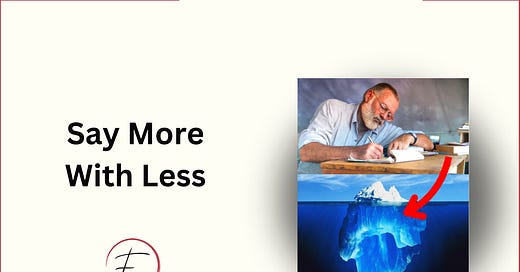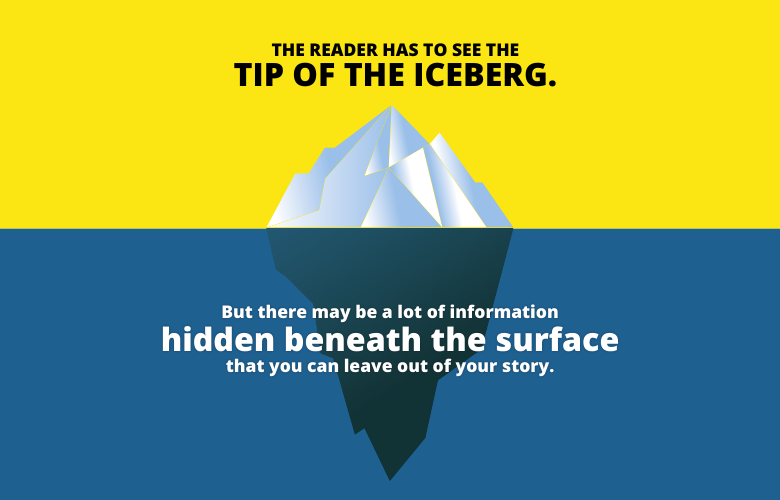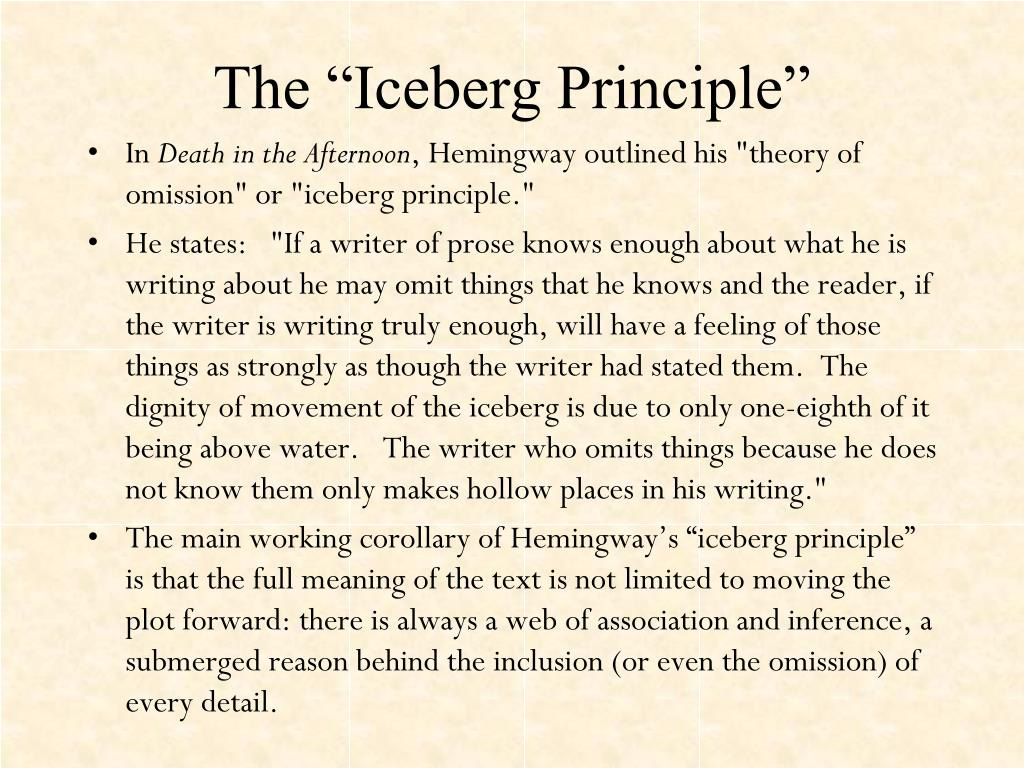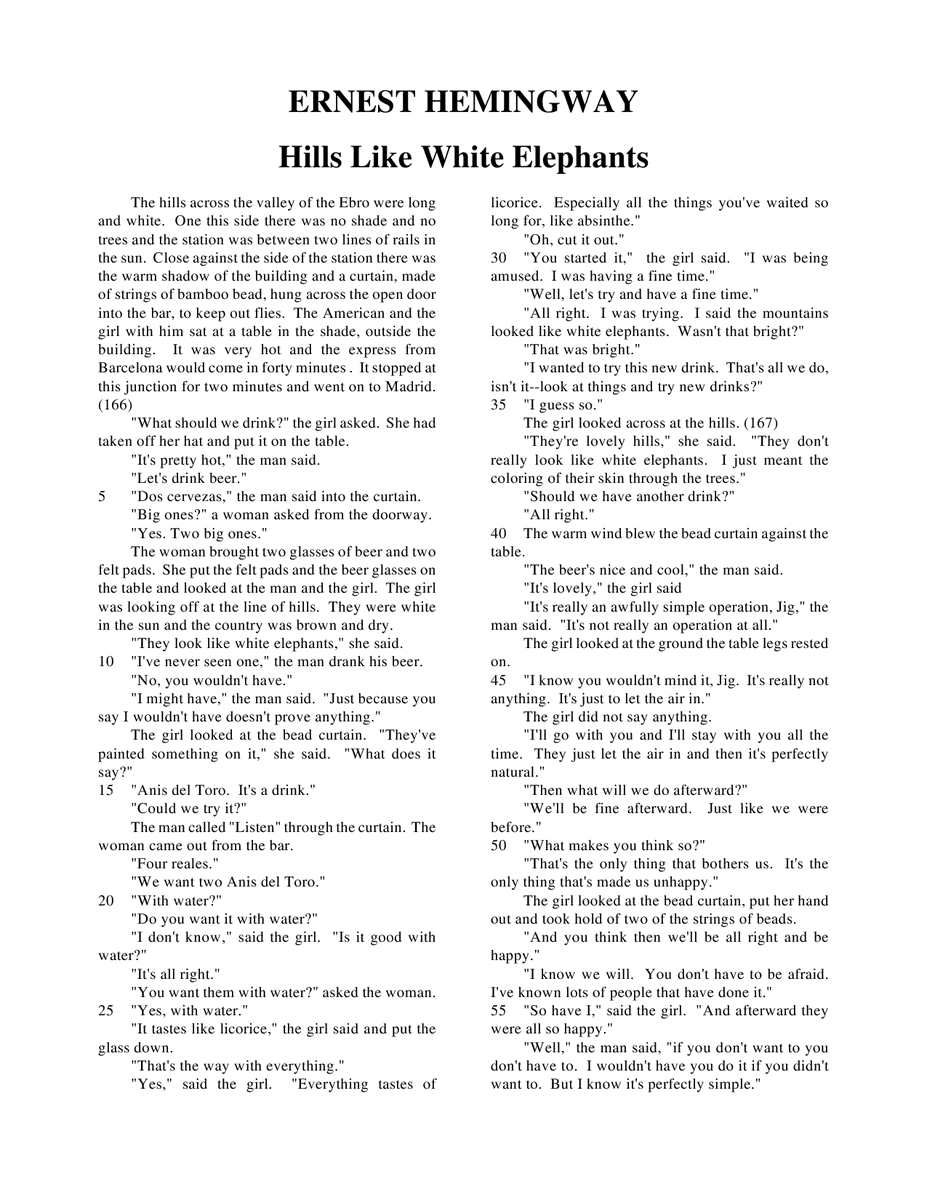Sponsored by 90-Minute Novel: A Masterclass In Storytelling With AI
The 90-Minute Novel masterclass will show you how to leverage AI to take your story ideas from concept to full outline in record time. By the end of this masterclass, you’ll have mastered essential storytelling techniques and created a unique Sub-Genre that will set your work apart.
Here’s what’s included:
How to become a prolific fiction writer by creating a niche Sub-Genre.
The power of Plot Archetypes that have shaped stories like Star Wars and Harry Potter.
The 3-Act Structure for outlining your entire story in minutes.
Advanced AI-driven World Building techniques to develop settings, characters, and more.
Plus, you’ll receive a collection of ChatGPT prompts and templates to turbocharge your writing process. FREE with your premium subscription to Fiction Writing With AI.
Hey there!
Everyone says the greatest writers are:
Stephen King, Henry David Thoreau, or Virginia Woolf.
But Ernest Hemingway is head and shoulders above them all.
Here’s the one secret technique he used to become a legendary writer:
The Iceberg Principle
Imagine an iceberg floating in the ocean.
Only about 1/8 is visible above the waterline.
This was Hemingway's philosophy for great writing.
Here’s how he applied it to his work:
“Show, Don’t Tell”
Earlier in his life, as a young journalist, Hemingway learned to pack maximum meaning into minimal words.
Fascinated by the Cubism art movement pioneered by Picasso in the early 1900s, this new style helped inform his writing process:
Cubism focused on using fractured pieces to represent subjects in an abstract manner.
Minimalism
Multiple angles
Limited color palette (focus on form, not color)
Like Hemingway's Iceberg theory, Cubism creates a canvas for the viewer's imagination.
The Iceberg Theory at its core is:
"Show, don't tell."
Let readers infer the meaning behind the scene and character by giving as little information as possible.
As the story progresses, predictability reduces the need for explanations.
Example: Hills Like White Elephants
Hemingway's "Hills Like White Elephants" is a masterclass in the Iceberg Theory.
It is an entire conversation about an impending abortion without the word ever being mentioned. The characters' tension and despair bubble up from beneath the surface of mundane dialogue.
Read this:
In many ways, the Iceberg Theory mirrored Hemingway's own struggles.
As a WWI veteran, he grappled with trauma he could not openly discuss.
Like an iceberg, a lot of this was hidden from view.
So, what can modern writers learn from the Iceberg Theory?
Cut, Cut, Cut—Until You Can Tell Your Story In Just 6-Words
Hemingway once said his best work was a story he wrote in just 6 words:
"For sale: baby shoes, never worn."
It's the ultimate example of the Iceberg Theory in action.
Hemingway’s advice?
Avoid excessive backstory. Hint at characters' pasts through brief flashbacks or dialogue.
Use sensory details sparingly. A few vivid descriptions can set the scene.
Trim the fat. Cut any word, sentence, or scene that doesn't serve the story.
Great writing is concise, to the point, and with no wasted words.
How To Write A 6-Word Story With AI
With AI, you can practice writing in this minimalist style, focusing on creating deeper meaning beneath the surface of your words.
A great place to start is by writing your own six-word story.
Here’s a quick AI prompt to help you generate one of your own:
Keep reading with a 7-day free trial
Subscribe to Fiction Writing With AI to keep reading this post and get 7 days of free access to the full post archives.










